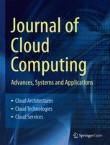Journal of Cloud Computing welcomes submission to the thematic series on "Edge computing security and privacy".
With the development of Internet of Things, more and more powerful devices are mediating our daily lives. Gartner predicts that there will be 20.4 billion IoT devices by 2020. This will also result in massive data generated by billions of sensors and devices. Meanwhile the increasing demand for advanced services and applications, such as virtual reality, augmented reality and infrastructure for smart cities, has created huge challenges on cloud computing. Edge computing has been proposed as a new computing paradigm where resources like computation and storage are placed closer to the data source. It enables a new class of latency and bandwidth sensitive applications as data can be processed at the nearest edge. Without sending data to the cloud, edge computing therefore enhances security and privacy.
However, edge computing also brings new possibilities and challenges for research in the field the security and privacy:
1) Edge nodes are close to the users, and as a result can potentially receive large amounts of privacy-sensitive data. If the data from an edge node is leaked, the consequences can be serious.
2) Compared with cloud centers, edge nodes have limited resources, so they cannot support complex security mechanisms.
3) Due to the high mobility of the devices and users, the edge computing environment is always changing. Attackers can easily join the group, and it is difficult to design security rules with multi-domain overlapping such as device provider, data generator/user, etc.
This thematic series aims to collect the most relevant ongoing research efforts in edge computing security and privacy. Topics include, but aren’t limited to:
- New threat models and attacks in edge computing
- Defenses and countermeasures
- Anonymity and privacy in edge computing
- Scalability issues and solutions
- System and software security of edge nodes
- Lightweight cryptography, protocols, and standards in edge computing
- Trust management of edge system
- Security and privacy management of edge system
- Security issues due to services and application deployment
- Security issues due to the overall architecture and cooperation
- Novel privacy, liability, and legal issues raised by edge computing
- Malware detection in edge application and system
- Secure service and application design
Submission Instructions
Before submitting your manuscript, please ensure you have carefully read the submission guidelines for Journal of Cloud Computing. The complete manuscript should be submitted through the Journal of Cloud Computing submission system. To ensure that you submit to the correct thematic series please select the appropriate special issue in the drop-down menu upon submission. All submissions will undergo rigorous peer review and accepted articles will be published within the journal as a collection.
Submission Due date: 31 June 2020
Guest Editors
Yin Li, Zhejiang University, China
Guangjie Han, Hohai University, Changzhou, China
Wenbing Zhao, Cleveland State University, Ohio, USA
Xinheng Wang, University of West London, London, UK
Submissions will also benefit from the usual advantages of open access publication:
- Rapid publication: Online submission, electronic peer review and production make the process of publishing your article simple and efficient
- High visibility and international readership in your field: Open access publication ensures high visibility and maximum exposure for your work - anyone with online access can read your article
- No space constraints: Publishing online means unlimited space for figures, extensive data and video footage
- Authors retain copyright, licensing the article under a Creative Commons license: articles can be freely redistributed and reused as long as the article is correctly attributed.
